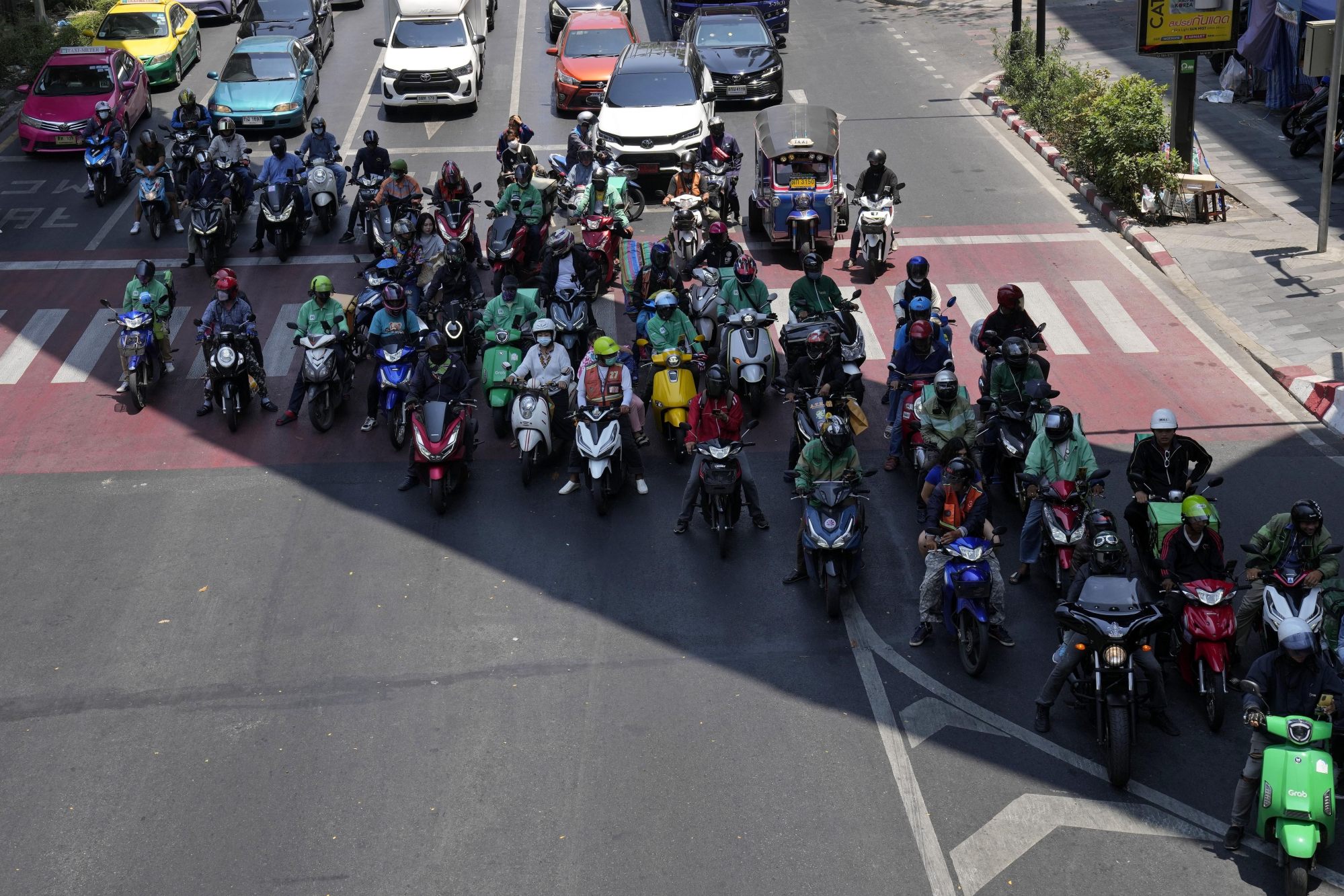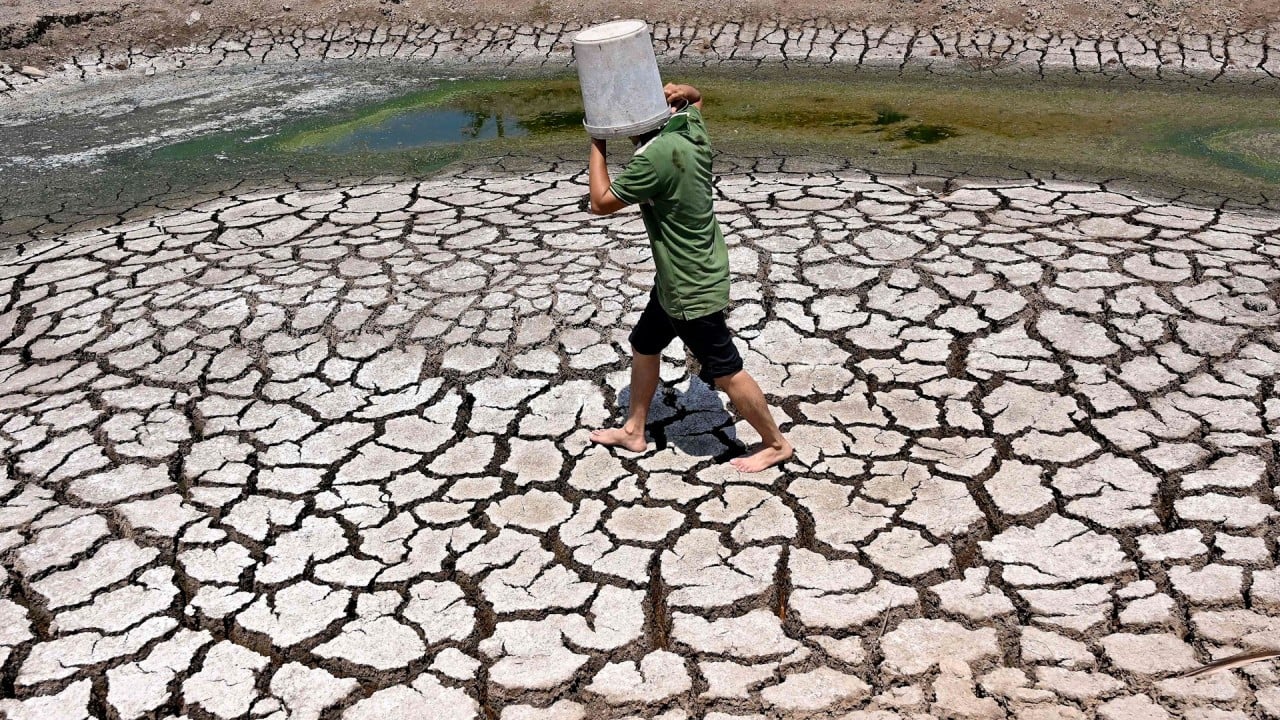Thailand’s heatwave is so punishing that even the pigs on Charawut Puwianwong’s farm are stressed.
While the Bangkokians who can afford it huddle into malls to avoid the blistering sun, and tourists from Phi Phi to Pattaya lament water shortages spoiling their holidays, it is Thailand’s millions of farmers who are most acutely exposed to the climate crisis.
On his farm in Udon Thani, northeastern Thailand, Charawut says his pigs are suffering.
“I’ve been raising pigs for four years now and this year has been brutal,” Charawut said.
“It’s the hottest year and my pigs have gone nuts. They are stressed and fight each other all the time. They don’t eat and they often get diarrhoea.”
That brings with it rising costs for medicine, vitamins and vets’ fees – all of which threatens to put smallholders like Charawut out of business.
“I have to get a fan with mist to keep them cool,” he said.

This year, El Niño – a naturally occurring weather phenomenon characterised by the warming of ocean surface temperatures in the central and eastern tropical Pacific Ocean – has led to record temperatures across Asia ahead of the monsoon season.
It has closed schools in the Philippines and Bangladesh, thinned out polling queues in India and caused drought in Vietnam, which saw three waves of temperature highs in April reaching a near all-time high of 44 degrees Celsius (111 degrees Fahrenheit) in two towns, according to weather authorities there.
In many parts of Thailand, the thermometer has for weeks oscillated around 40 degrees and above, making farm work impossibly hard, withering valuable Durian plantations, spoiling some of the sugar crop and pushing the price of eggs higher as chickens and ducks are unable to lay.
The heat is so intense that chickens have died on farms – with one farmer in Chanthaburi, eastern Thailand, posting graphic videos of 12,000 dead poultry being scooped up for incineration after they died without fans to cool them.
Three dozen districts across Thailand recorded their highest temperatures ever in April, according to the Thai Meteorological Department – the hottest month of the year before the monsoon rains normally sweep in and alleviate the swelter.
While tropical storms have churned across parts of Thailand, the stifling heat has drifted into May.
It has caused nearly 40 deaths so far, Thai authorities say, with warnings to elderly people and other vulnerable groups to stay indoors and keep hydrated during the harshest daylight hours.

But the extreme temperature is cutting into daily Thai life like never before.
Desperate orders for eggs flip around egg trading Facebook groups from across the country.
One user posted an appeal for “23kg of duck eggs”, while another said “Need eggs in Ratchaburi, Lampang, Khon Khaen, Chiang Mai”, offering to send a truck as far as it takes.
“Don’t we all?” another user said.
Thailand’s power usage has surged to daily records of over 36,000 megawatts as soaring temperatures see a surge in electricity used to power fans and air conditioning, according to data on the state energy regulator’s website last week.
Last month, the World Meteorological Organization said Asia was the world’s most disaster-hit region from weather, climate and water-related hazards last year. Drought, floods and storms are expected to intensify over the coming years as global heating plays havoc with the climate.
In Malaysia, two deaths from heatstroke have been recorded as of the middle of last month, from 45 cases reported this year. The Malaysian Meteorological Department last Tuesday issued a warning across 18 districts in Peninsular Malaysia that temperatures are expected to rise to around 35 to 37 degrees for three days straight, triggering stage one in the country’s three-stage heatwave alert.
“The El Niño phenomenon can cause drier weather and usually occurs within 9 to 12 months and sometimes can last up to two years,” the department said in a statement.
However, unlike neighbouring Southeast Asian countries like Thailand and Myanmar which are seeing the mercury rise to mid-40 degrees, Malaysia’s temperature has yet to exceed its record high of 40.1 degrees, recorded in April 1998.
Still, the government projects a severe dry spell that will see a decrease in rainfall of up to 36 per cent in certain areas from next year into 2026. The dire forecast came from Malaysia’s Third National Communication and Second Biennial Update Report to the United Nations Framework Convention on Climate Change, which outlined several challenges faced by the country in regard to climate change.
Aside from heatstrokes and death directly attributed to rising temperatures, the rising mercury and changing rainfall patterns are expected to throw a wrench in the government’s effort to combat the existing threat of vector-borne diseases, particularly dengue and malaria.
“There is evidence that a warming trend over the last decades has enhanced the presence, survival and vectorial capacity of the malaria vectors, increasing the probability of malaria transmission and highland epidemics,” the report said.

Having recorded zero human malaria infections from 2018 to 2021, Malaysia saw a spike last year with over 1,000 cases recorded, a sharp rise from 404 cases in 2022.
Dengue cases have also spiked, with 39 deaths recorded due to dengue-related complications as of April 20 compared to 22 deaths for the same period last year.
Dengue-transmitting mosquitoes are very sensitive to environmental conditions, drawing a direct link between their numbers and climate change, said Universiti Kebangsaan Malaysia’s Associate Professor Yanti Rosli.
“Warmer conditions enable mosquitoes to reach maturity more rapidly. Rainfall creates breeding sites. Humidity influences the evaporation rates for these sites. These are all conditions that climate change has exacerbated,” Yanti said.



